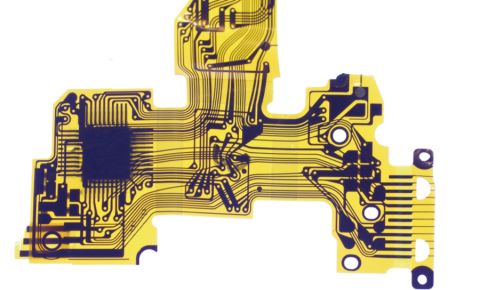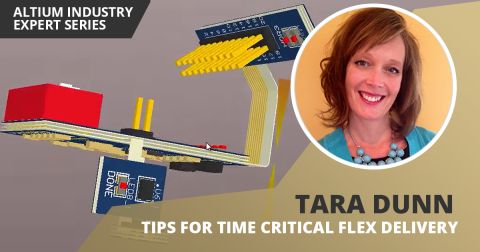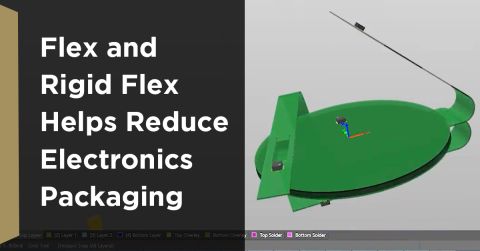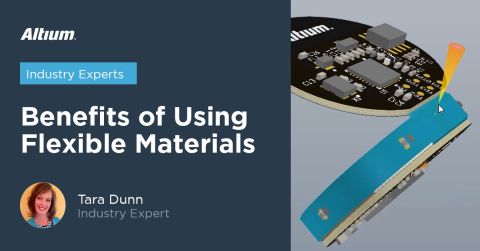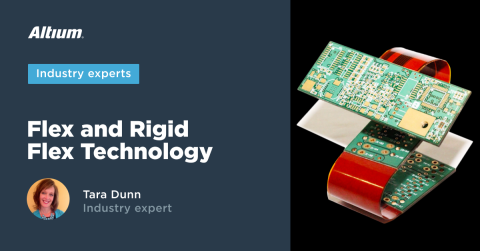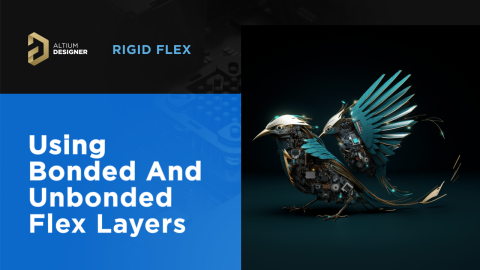Common Flex Design Mistakes and How to Fix Them

The ability to bend, flex and fold are one of the primary benefits of flexible circuit materials and while there are several examples of flexible circuit designs that withstand hundreds of thousands of even millions of flexes, the reality is that designs that are dynamically flexing often have had the design updated many times before reaching optimal performance. The good news for designers new to flexible circuit designs is that most flexible circuit applications don’t demand quite that rigorous of performance parameters and applying a few common recommendations to improve the flex life of a design will often lead to highly reliable, flexible circuit designs with minimal revision changes. In today’s blog, let’s review some of the most common design mistakes that can lead to cracking breaking of circuit traces and how to correct those. The team at American Standard Circuits makes the following recommendations and has provided all of the images used here.
The most common design mistakes are from added stress in the bending and flexing areas:
-
Traces can break or crack when sharp angles are used in routing traces, especially in bend regions where there is the most stress on the circuit.
-
Not adding teardrops at the pad to trace interface.
-
Placing vias where the flex bends or at the edge of the stiffener interface where there is added stress to the circuit.
-
Not capturing the SMT and unsupported pads, which can lead to pad lifting during assembly.
-
Creasing, folding or bending flexible printed circuit boards beyond their stress points.
Most printed circuit board designers have made one or all these common mistakes as they were navigating the learning curve of the nuances of designing a printed circuit board that will be flexing and folding.
Avoid sharp angles while routing traces and avoid transitions in the flexing areas:


Add anchoring spurs and pad fillets at the trace-to-pad interface:


The trace-to-pad interface can be one of the weakest points in a flexible circuit design and an area prone to breaking, cracking, and potential lifting during soldering and assembly operations. You can see in the examples above that the “robust” designs utilizing anchoring spurs and pad fillets significantly increase the copper captured by the overlay and increases the surface area at the pad-to-trace interface, increasing the pad's strength. Many designs require narrow conductor widths to pass through a connector field; this narrow conductor width is often used throughout the flexible circuit design. Taking the time to increase the widths with improve manufacturing yields and overall reliability. One side note, this is important even in designs that are not dynamically flexing in end-use. The thin, flexible materials are prone to movement and stress during standard manufacturing processes.
Avoid placing vias where the flexible circuit is intended to bend or at the edge of a stiffener–circuit interface:

“Capture” SMT and unsupported pads to prevent lifting during assembly operations:
The method that provides the greatest pad capture capability is to “capture” the pad area with a layer of drilled coverlay. A layer of polyimide and adhesive is pre-drilled and bonded to the flexible base material. There are a couple of things to be aware of using this method. First, when bonded that adhesive will “squeeze-out” into the intended pad area and this should be taken into account during design and manufacturing. Second, as pad areas become tighter, this method becomes increasingly difficult. Registration tolerances and squeeze out can effectively reduce solderable annular ring and violate specifications.
Another option is to use photoimageable coverlay, a process very similar to traditional printed circuit board soldermask using materials specifically designed to be flexed. This method lends itself to tight tolerances and “square” pads. The disadvantage to this method is that these materials, while flexible, are not as flexible as the polyimide coverlay and may not be acceptable for all applications. If you have tight geometries that don’t lend themselves to drilled coverlay processing, consult with your fabricator for additional options.
Use established guidelines for creasing, folding or bending flexible materials:

While flexible materials are designed to be bent, flexed and folded, there is a limit to the stresses the material can withstand. Exceeding these limits can result in delamination and conductor fracture. Standard guidelines are:
Single-sided construction: 3-6x’s the circuit thickness
Double-sided construction: 6-10x’s the circuit thickness
Multilayer construction: 10-15x’s the circuit thickness
Dynamic application: 20-40x’s the circuit thickness
For example, with a double-sided circuit with an overall thickness of 0.012”, the minimum bend radius would be 0.072”.
These are just a few of the best practices for flexible printed circuit design. A great resource to learn more is the recently published e-book from ASC, “The Companion Guide To……Flex and Rigid-Flex Fundamentals. This companion guide goes into more detail on these and other best practices. i007ebooks.com/flexcg
